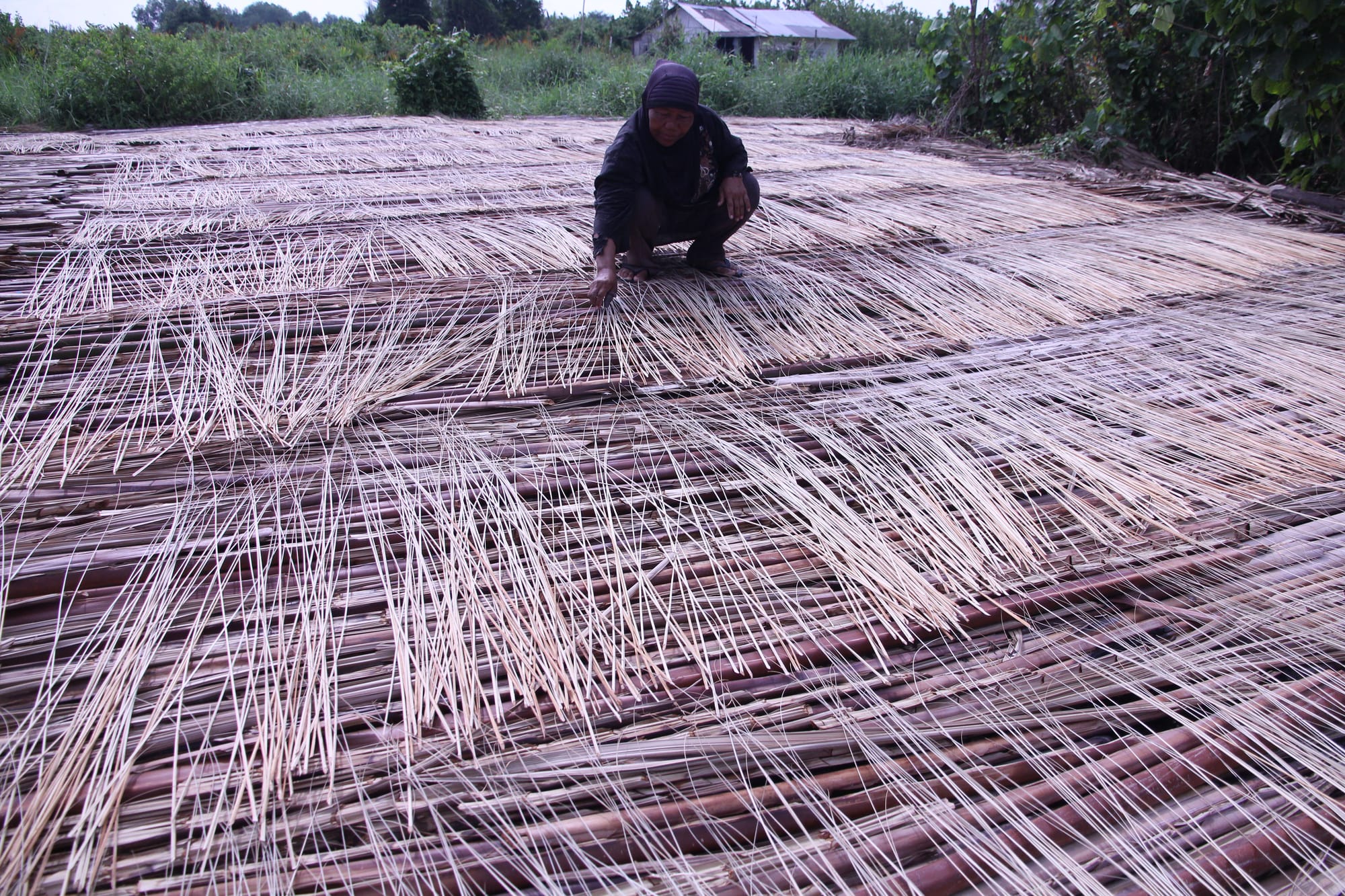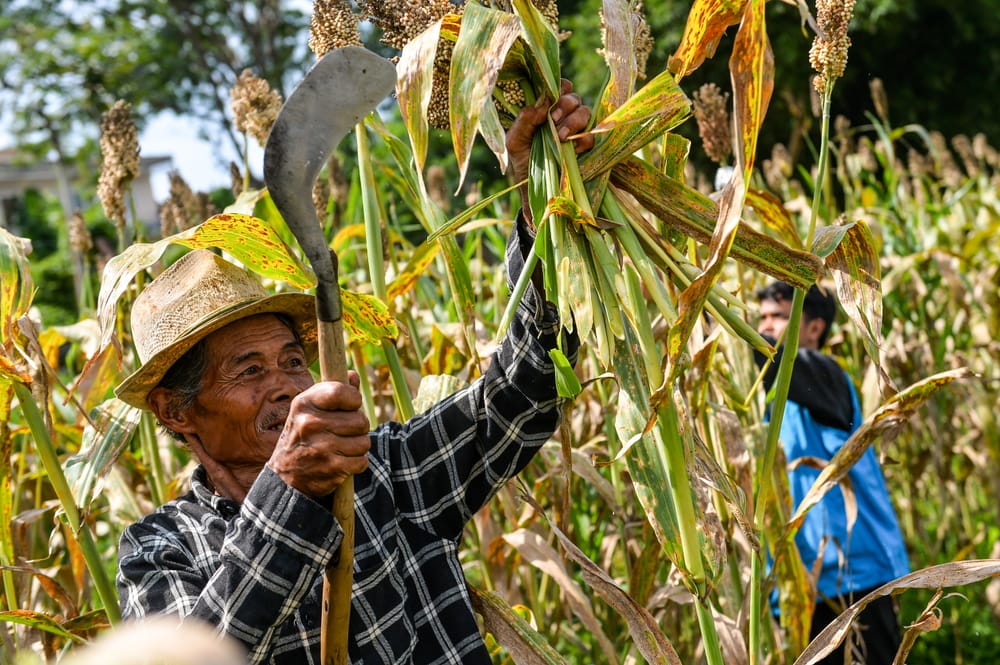They look like broom sticks, but are longer and stiffer. Some are light brown in color, while others are darker, depending on the degree of dryness when drying. No one would have guessed before that the drying sticks came from the waste of fallen palm fronds.
Known as palm stick, this new product comes from the waste of palm fronds that are dried by taking the middle part as raw material for sticks. Usually, these palm fronds can be obtained from oil palm plantation areas in Indonesia.
Now not only a favorite, palm oil stick exports also show a significant contribution to national trade performance. The utilization of palm oil waste to become sticks creates great opportunities in the international market.
Nana Supriatna, President Director of PT Boldindo Beringin Jaya (Bold Group) has started the business of processing and utilizing palm sticks into high-value products.
He said that his company has been exporting Palm Midribs, a term for palm fronds that are processed into sticks, since 2019 with an export value in a year that could reach Rp 500 billion.
The main export destinations for these palm sticks are India and Pakistan, both countries need palm sticks as incense for worship and of course used for brooms.
"Not only CPO which has proven to be Indonesia's leading export product, it turns out that palm sticks can also generate a lot of cuan," he told SUAR.
Nana explained that these palm sticks are produced from palm fronds that are twisted, cleaned, and then dried.
In the cultivation process, oil palms must be pruned regularly to maintain sanitation and humidity around the fruit growth area so that the fruits or bunches can develop well and not rot.
His party is still asking for support from the government so that this palm stick commodity can continue to be accepted by the market.
The desired forms of support include capacity building programs, LPEI has training programs for prospective new exporters such as the Coaching Program for New Exporters and facilitates the Lidi Sawit Foreign Exchange Village program to increase national exports.
The local government is working with the provincial government to provide assistance in the form of palm stick shaving machines to cooperatives to increase the added value of products before export.
High Demand
Apart from Middle Eastern and European countries, demand for this commodity is high, especially in South Asian countries.
Met in the middle of Trade Expo Indonesia 2025, CV Kahaka International has exported 622 containers of palm sticks from 2020 to 2024 with a value of US$ 3.5 million.
The owner of CV Kahaka International, Rianto Aritonang, said that the main export destinations for palm sticks are Pakistan, India, Nepal, Vietnam, Singapore, and Bangladesh with an average export of 12 to 15 containers per month.
Most palm sticks are used for handicraft products such as broom sticks, baskets and vases.
Rianto first became interested in developing this palm stick commodity when he saw his friends who worked as areca nut collectors lose their jobs due to the COVID-19 pandemic.
Rianto, who grew up in an oil palm plantation and worked previously as an engineer in the shipping industry, began to seek information about the export business.
The first opportunity was seen in the export of areca nuts to South Asian countries. Not stopping there, Rianto explored other export opportunities.
"I realized that Sumatra has a lot of oil palm plantations, and palm fronds are always wasted every two-week harvest. I talked to buyers and convinced them to try palm sticks because it's a shame that palm fronds are thrown away even though they are of high value," he told SUAR when met on the sidelines of the TEI 2025 event at ICE BSD City, Tangerang Regency, Banten (15/10).
He added that on the first day of TEI 2025, he will meet with potential buyers from Vietnam who will see the quality of Indonesian palm sticks.
In November 2020, he made his first export to India and it was responded positively. The export of sticks from palm oil waste not only contributes to waste reduction but also improves the welfare of CV Kahaka International's partner palm oil farmers.
To fulfill the raw materials for palm sticks derived from waste, CV Kahaka International partners with more than 300 oil palm farmers spread across 15 locations in Sumatra and Java, such as in Siantang, Dumai, Lampung, and Pemalang.

Rianto plans to expand the palm stick export market to European countries and Australia that prioritize environmentally friendly products.
Currently, CV Kahaka International with the assistance of LPEI and other government agencies is strengthening relationships with European and Australian buyers to penetrate export markets to new countries.
Global demand for Indonesia's nipah stick and palm stick products in 2023 is recorded to grow positively.
Based on data from the Central Statistics Agency (BPS) processed by the Indonesian Export Financing Agency (LPEI) Economist team, the export value of Indonesia's nipah sticks and palm sticks in 2023 increased by 11.44% year-on-year (yoy) to reach USD 29.32 million from USD 26.31 million in 2022. In line with the value, the export volume also increased by 15.97% yoy to reach 70.08 thousand tons from 60.43 thousand tons in the previous year.
This increase in exports was supported by increased demand from two main destination countries in 2023, namely exports to India rose by USD1.16 million to USD17.04 million in 2023 and to Pakistan rose by USD1.84 million to USD6.17 million in 2023.
The quality standard for nipah sticks and palm sticks is 50% dryness with a minimum length of 90 centimeters.
Indonesia's most exported nipah and palm sticks derivative products are brooms made from tied twigs or vegetable materials, with a share of 98.24% or equivalent to USD 28.80 million.
The latest development, the export value of palm sticks and nipah sticks for the January-June 2024 period reached USD10.18 million, down 27.59% yoy from USD14.06 million in the same period last year.
This is in line with the decline in volume, which only reached 26.6 thousand tons or down 18.91% yoy from 32.8 tons in the same period the previous year.
Many Uses
IPB Agricultural Analyst Dwi Andreas said that there are many uses for palm sticks for export, palm sticks are processed into various unique handicraft products, including plates, trays, fruit holders, vases, and tissue boxes.
While the largest export demand for palm sticks is for the manufacture of traditional brooms and grain sweepers, palm sticks can be used as raw material for paper products.
"Palm stick exports are a source of foreign exchange for the country, especially Indonesia as the world's largest palm oil producer," he told SUAR in Jakarta (10/10).
The utilization of palm sticks, he said, can improve the economy of residents in rural areas by providing economic opportunities for palm oil farmers.






